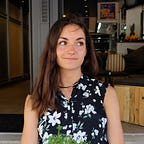Utopian Realism at a creative hub in Potsdam: the Case of the Rechenzentrum
*Utopian realism is a term used by Giddens and Morin. Utopian, because it reflects on a future reality that is so different that it seems condemned to remain as a fantasy. Reality, because it detects fragments of this expectation in the formation of modern reality.
“The freedom to make and remake our cities and ourselves is one of the most precious yet most neglected of our human needs” David Harvey, Right to the city
When I first arrived in Potsdam, as a fellow of the START program, I thought that it was a peaceful and a more or less predictable town. But Potsdam is more than your first impression of it. It is actually a city full of paradoxes. Astonishing villas and squatted buildings co-exist in an urban landscape that is transforming during the day, from a vibrant student city in the morning to a quiet, family-friendly city at night, as most of the students who study in Potsdam take the train –a 20min ride- back to Berlin after their courses.
Potsdam’s parks and palaces are impressive and have been its main touristic attractions. However, the real gem of the city is situated in front of everyone’s eyes; there, at the city center, stands a big mass of concrete and glass; a cube that can be left unnoticed, but is actually one of the most interesting and vibrant spots on the city map!
When I first entered the Rechenzentrum building, I came across a visual paradox. I was hypnotized by its old, strict form, its cubical structure, the similar offices one after the other and the long, grey corridors. Architecture here demonstrates its skills in creating a stiff environment, an austere landscape of concrete, implying order and discipline. However, after a closer look, one can observe a process of transformation in the space. Decorated doors, Art on the walls, cozy furniture in corners creating a home-like feeling and even interactive games out of some offices… All these elements create new narratives for the space, by its new creative inhabitants.
It is the second year that the former data center has been transformed into a creative hub. There, the creative scene of the city (and beyond it) can rent affordable, independent office spaces at the heart of the city.
This ambitious project didn’t pop-up overnight. A long history of protests and lobbying led to the City Mayor to suggest that the inactive building could be offered to the creative beat of Potsdam, until 2018. At that time, it is supposed to be demolished, in order for the Garisson Church to take its place — reviving a part of the history of Potsdam. So, in terms of urban development, an important discourse takes place: history versus contemporaneity, established urban vision versus a reimagined one, cultural heritage versus contemporary creation…
Choosing sides is not as easy as it seems, but before even trying to come to a conclusion let me give you an insight of the RZ project. Luckily enough, I had the chance to spend three weeks there, taking interviews, photographs and trying to understand the complex strings that hold the building and the idea of it. The result of my research is the Dialogues booklet, which you can read here.
This booklet has been conducted in collaboration with the Waschhaus Potsdam, as part of the START-Create Cultural change, a program of the Robert Bosch Foundation, in collaboration with the Goethe Institute of Thessaloniki and the German Association of Sociocultural Centers.
The Rechenzentrum is more than a building given to the creative scene of Potsdam. As Anja Engel, the cultural manager of the project, told me:
“It is a room of possibilities. Sometimes I think of it like a utopia; It is a place where you can live your individualism, but in the context of a growing community”.
The RZ is a fertile ground for new collaborations to emerge, for barter economy to flourish and for human interaction to lead to new links between generations, fields and interests. It is a celebration of connectivity instead of isolation and openness instead of fear of the Other.
In the urban context, the RZ is a model that stands for how the creative scene of a city can influence the urban imaginary and contribute to its sustainable development. By reusing inactive urban resources and filling it with the entire spectrum of human diversity in the creative field, an open space is created, for new ideas and social connections to emerge. And this is exactly what contemporary cities need, especially in the European context -a continent in transition- which seeks to establish social cohesion, active participation and a sense of belonging, amongst its diverse habitants.
Furthermore, the RZ model is unique in terms of administration as a particulat triangle has been formed; a trialogue where the City Council, a social foundation (SPI Stiftung) and a bottom-up initiative (KulturLobby) join forces and manage the project, collaboratively. This platform of exchange creates a know-how that can potentially be implemented to other models and help establish a more fruitful collaboration between the public sector, the private one and the civic society.
To sum it up, the outcome of whether the RZ building survives or not, is just one case out of many when it comes to citizens demanding a space in the city. Even if the building vanishes after 2018, the need of the more than 200 current users of the RZ to be relocated will –hopefully- be too obvious and urgent to be ignored. But a sustainable solution cannot be to protest from point zero, every time anew. Instead, a process must be found, for the city administration and the citizens to have an active, ongoing dialogue, in which they will collaborate to fostering their city’s future, in a participatory, innovative and inclusive way.
Stay tuned…!
